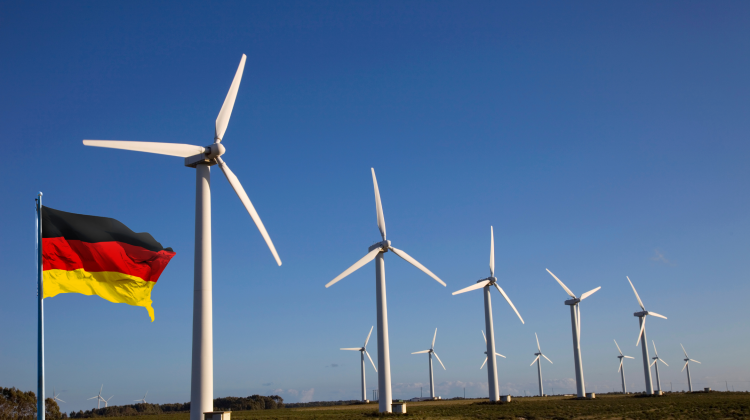Between January and July 2025, Germany added 8,646.9 MW of gross renewable capacity, driven by solar and onshore wind. However, growth remains below the pace needed to meet the legally mandated targets for 2030, according to data from the Federal Network Agency (Bundesnetzagentur).
Germany added a net total of 8,646.9 MW of renewable capacity between January and July 2025, according to the official Market Data Register (MaStR) survey, published by the Federal Network Agency (Bundesnetzagentur). Despite sustained growth in solar and onshore wind energy, the country is still below the monthly rates needed to achieve its ambitious targets set in the EEG and WindSeeG for 2030.
The main source of growth is solar Strahlungsenergie, which added 5,384.0 MW so far this year. This technology represents 62% of the new installed capacity in the period. This performance is driven by a steady trend in new installations, with a monthly peak of 1,970.7 MW in December 2024 and a current projection of 1,408 MW by July 2025, considering current and expected increases (+10%).
However, the data reveal that to meet the goal of 215 GW of solar by 2030, the country must maintain a monthly average higher than the current one. As of July of this year, cumulative solar capacity reached 109,049 MW, which means that more than 105 GW remain to be installed in less than five years.
In the case of onshore wind, 2,169.6 MW were added between January and July 2025. This represents moderate progress, although more dynamic than that observed in the first months of the year, when expansion was almost zero. The highest figure was recorded in May, with 419.5 MW net.
Offshore wind, on the other hand, remained without net growth throughout the period. Since July 2024, no new units have been registered in operation, jeopardizing the goal of 30 GW offshore by 2030. According to the document itself, the pace of implementation is zero, and no new permits have been granted during 2025. Current capacity remains stagnant at 9,215 MW.
The fourth renewable energy source considered, biomass, recorded a net increase of just -2.6 MW in the cumulative year of 2025. This negative balance is due to the fact that permanent inactivations (85.9 MW) exceeded new additions (83.3 MW) so far.
The outlook becomes more complex if we also consider the authorized projects that have not yet begun operations. In total, between January and July 2025, permits were granted for 9,700.3 MW of new onshore wind farms, suggesting latent potential. However, only 1,578 units have been approved, and the speed of implementation does not appear sufficient.
By region, Bavaria leads with 2,332 MW of new solar energy, followed by North Rhine-Westphalia (1,086.7 MW) and Lower Saxony (879.9 MW). These three states account for almost half of the national solar growth. In onshore wind, the largest contributions came from Rhineland (3,252.1 MW approved) and Lower Saxony (1,965.1 MW).
The report also analyzes the relationship between registrations and inactivations. During July 2025, for example, 1,414.1 MW of solar energy were registered, but 5.3 MW of closures were reported. In onshore wind, the contrast is starker: 318.1 MW new versus 22 MW retired, resulting in a net positive balance of 296.1 MW.
Overall, the monthly progress rate remains below what is needed. To achieve the 2030 targets, the projection set out in the document suggests an “Ausbaupfad” or steady growth path. As a reference, approximately 1,650 MW per month are required for solar until 2030; 1,150 MW per month for onshore wind; and 300 MW per month for offshore wind. In all cases, current figures remain far from this horizon.
The report published on August 13, 2025, by the Bundesnetzagentur (Federal Network Agency) confirms that progress is significant, but insufficient. While renewable energy is advancing, capacity targets continue to set a more ambitious pace than actual growth.
